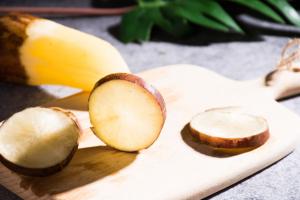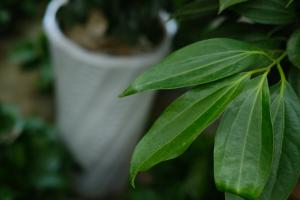How to Care for Peace Lily Plant
The peace lily plant, also known as Spathiphyllum, is a popular houseplant known for its lush foliage and white flowers. It is an easy-to-care-for plant that can thrive even with minimal attention. Below are some tips on how to care for your peace lily plant.
Lighting
Peace lilies prefer bright, indirect light. Placing them near a window that doesn't receive direct sunlight is ideal. Direct sunlight can scorch the plant's leaves and cause them to turn yellow. If the plant is not getting enough light, it may not produce flowers.
Watering
Peace lilies require moist soil but can be sensitive to overwatering. It is best to water them when the top inch of soil feels dry. Water the plant thoroughly and allow the excess water to drain. The plant should not sit in standing water. Wilting or yellow leaves can be a sign of over or under watering, so pay attention to the plant's needs.
Humidity
Peace lilies are tropical plants and prefer high humidity levels. Dry air can cause the plant's leaves to turn brown and crispy. You can increase humidity in the plant's environment by misting its leaves with water, placing a tray filled with pebbles and water under the plant's pot, or by placing a humidifier in the room.
Fertilizer
Peace lilies do not require frequent fertilization, but it can help promote healthy growth and flowering. Use a balanced fertilizer once every three months during the growing season. Be sure to follow the instructions carefully, as over-fertilizing can damage the plant's roots.
Repotting
Peace lilies can outgrow their pots quickly, which can lead to root congestion and stunted growth. It is best to repot them every two years or when necessary. Choose a pot that is one size larger and use a well-draining potting mix. Repotting should always be done in the spring or summer when the plant is actively growing.
Pests and Diseases
Peace lilies are generally pest and disease-free, but they can be susceptible to spider mites and mealybugs. Check the plant regularly for any signs of infestation, such as webbing or cottony growth on the leaves. If an infestation is detected, isolate the plant and treat it with an insecticidal soap or horticultural oil.
In conclusion, the peace lily plant is an excellent addition to any home or office due to its easy to care for nature and air-purifying abilities. Regular attention to lighting, watering, humidity, fertilizer, repotting, and pest control can ensure the plant's health and longevity.

 how many times do yo...
how many times do yo... how many planted tre...
how many planted tre... how many pine trees ...
how many pine trees ... how many pecan trees...
how many pecan trees... how many plants comp...
how many plants comp... how many plants can ...
how many plants can ... how many plants and ...
how many plants and ... how many pepper plan...
how many pepper plan...































